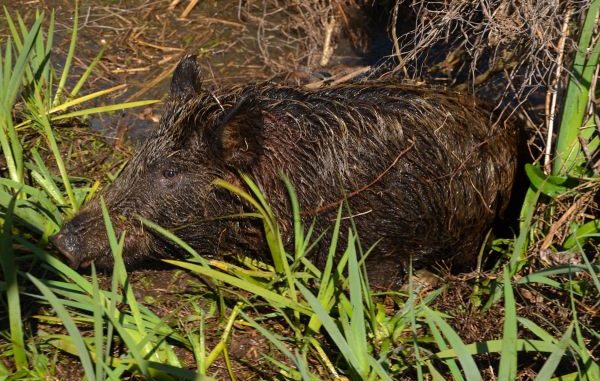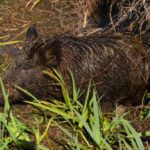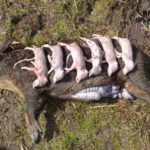
Louisiana has a strange relationship with Sus scrofa — the feral hog.
The state’s official stance is that they are a plague, a scourge, an ecological disaster that needs to be eliminated from the landscape.
Hogs compete with native wildlife for food and space. They destroy agricultural crops and prevent forests from reseeding themselves, pollute waters with their feces and carry a host of nasty diseases.
Publicly, most recreational hunters toe the official line. But behind the scenes, interesting things are happening.
The hunter take of feral hogs has passed up the harvest of deer in Louisiana. A surprising number of hunters being candid admit that hogs are fun to hunt and good to eat.
The issue is that hunters aren’t killing enough of them.
The state’s hog population is estimated to be around 500,000 and increasing. Hunters take about 160,000 a year —32 percent of the population.
The experts’ stand is that 75 percent of the population needs to be killed each year just to keep the population from growing any larger.
The glamorization of hogs as sport animals concerns Dr. James LaCour, the state wildlife veterinarian for the Louisiana Department of Wildlife and Fisheries, because it prompts their transport to new areas.
Because of this, he noted, some states have banned sport hunting for hogs, leaving population control to agencies and landowners.
Feral hogs are not called wild hogs because they are essentially descended from domesticated animals that have gone “wild.” The first pigs on the continent are thought to have been imported to Florida in 1539 by the Spanish explorer Fernando de Soto. He started out his march to what is now Texas with 13 sows.
By the time he got there in 1542 the herd numbered 700 animals, a remarkable increase if the explorers ate some of them (why bring them if not to eat?) and others of this notoriously hard-to-herd animal escaped along the way.
A few spots in Louisiana have held feral or free-ranging hogs for at least 200 years, but in the last 25 years their numbers have exploded, and they are now found in all 64 parishes.
Without a doubt, their spread and increased numbers were given a strong assist by hunters who not only transplanted feral domestic swine but imported and released Eurasian wild boars to breed with the feral hogs. Their vision was to be able to hunt wild boars and deer the way nobility in Europe hunted wild boars and stags.
The influence of Eurasian wild hog genetics (sometimes called “Russian blood”) is obvious. At one time, Louisiana feral hogs were every color in the rainbow: red, white, black spotted or red spotted.
Some even carried the typical Hampshire coloring of a white belt around a black body. Only a small minority were completely black. The piglets of these animals carried the same body colors as the adults.
Now, the majority of feral hogs are grizzled black with or without brown under-hairs. Almost all of the piglets are born with longitudinal black and whitish stripes, a characteristic of Eurasian wild hogs.
Much has been made of the fecundity of feral hogs. Some authorities have claimed that a sow will produce two or even three litters of young per year. A more-accurate number is probably three litters in two years.
But with six piglets per litter, they are still far more fecund than white-tailed deer, Louisiana’s main big-game animal.
LaCour said half-jokingly that “…of those six, eight will survive.”
His assessment of their ability to survive is accepted by most authorities. Sows are good mothers and very protective.
In Louisiana, they thrive in marshes and swamps, as well as upland pine and hardwood forests. Elsewhere, populations exist in deserts and mountains.
And feral hogs eat virtually anything.
“If there is one calorie in it, a pig will eat it,” said Dr. Kim Marie Tolson, associate professor of biology at the University of Louisiana at Monroe.
About 90 percent of the diet of feral hogs is vegetative, a fair amount of it from deer feeders and hunters’ food plots, but they will not pass up an opportunity to eat protein, whether it’s insects, snakes or deer fawns.




